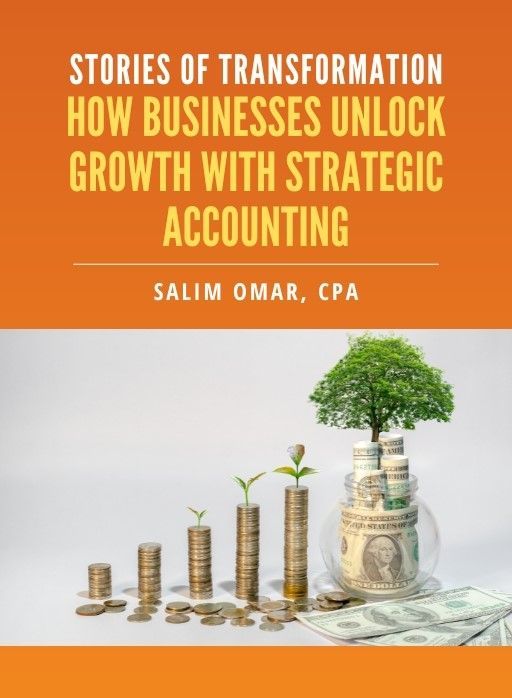Tax Extension Hacks: Insider Moves Every Growth Business Should Know
There’s a quiet way growth companies protect cash, reduce penalty risk, and buy themselves strategic runway—and it isn’t a loophole. It’s a disciplined approach to tax extensions that turns a filing delay into a financial advantage.
When books are in motion—late-arriving 1099s, open audit tie-outs, M&A diligence, R&D study drafts—rushing a return adds risk without creating value. The smart move isn’t filing fast; it’s filing right. Here’s how top operators stretch time without losing control.
Shift from Guesswork to Growth Work
When finance is juggling close reconciliations, late K‑1s, and last-minute adjustments, filing pressure forces reactive decisions. A well-timed extension creates breathing room to finalize numbers with confidence—not guesswork.
- What to expect: Free up 8–12 hours/week for leadership and senior ops by shifting from “rush-to-file” to a sequenced close-then-file plan anchored by an approved extension.
- Outcome: A calmer finance cadence that prioritizes accuracy and cash outcomes over arbitrary filing speed.
- Tax edge:
Redirect brainpower to boosting margins, pricing, and growth projects while the extension locks in penalty protection.
Ease the Strain, Elevate the Results
The hidden cost of sprinting to an incomplete tax return is rework—amended filings, notice responses, and team fatigue.
- Stabilize workload spikes: Use the extension to phase work—books closed first, tax adjustments second, elections/policies last—so the team isn’t firefighting across all fronts at once.
- Typical result: Fewer after-hours “document hunts,” cleaner schedules, and better cross-functional coordination with legal, HR, and RevOps.
- People first: Protect the team now for better execution when it’s time to actually file.
Use the Tax Extension to Optimize Cash, Not Procrastinate
Extensions delay the filing, not the payment. Smart teams leverage this to fine-tune estimated payments and avoid penalties.
- Make the move:
- Lock a conservative extension payment based on year-to-date performance plus cushion.
- Model scenarios for revenue recognition timing, credits, and deductions to right-size the final balance.
- Park surplus in short-term yield until final payment is due.
- Cash edge:
Avoid overpaying early; avoid underpaying penalties later. Extensions buy time to optimize—not to delay responsibility.
Exploit High-Impact Elections and Credits
Some of the most valuable tax outcomes depend on clean documentation and deliberate elections—best handled with an extension’s breathing room.
- Priority list:
- R&D credit substantiation: qualify wages/contractor costs and supporting narratives.
- Accounting method changes: evaluate Section 481(a) adjustments with clear cash impact modeling.
- State nexus and PTE tax: decide where elective pass-through entity taxes reduce owner-level exposure.
- Bonus depreciation and capitalization policy: align tax strategy with GAAP/board optics and lender covenants.
- What changes fast: With 4–8 extra weeks, teams move from “good enough” to “ironclad” on credits, elections, and memos—protecting value at audit time.
Create Elasticity in Your Cost Structure
Extensions pair well with flexible resourcing. Bring in fractional tax/CFO expertise for the heavy lifts, then scale back post-filing.
- Shift tasks to an external bench:
- Return workpapers and tie-outs
- Credit studies (R&D, ERC interplay if historically relevant)
- Multi-state apportionment and sales tax review
- Entity-level PTE calculations and owner statements
- Agility play: Dial up expert cycles while internal teams keep pressing on pricing, collections, and Q1/Q2 pipeline.
Cut Costly Errors Before They Happen
Haste drives misclassifications, missed schedules, and unsupported positions that trigger notices—each a time sink.
Bring in a formal pre-file gate:
- Close checklist, variance analysis, and trial balance freeze
- Return-to-books mapping for every line item
- Memo each high-judgment area (revenue, capitalization, credits)
- Immediate upside: Fewer late adjustments, fewer notices, and a defensible file that’s audit-ready.
What to Extend vs. What to Lock (Guardrails)
Extend first (high leverage, low risk):
- Federal and state income tax returns (Form 7004 for entities; state counterparts)
- Complex credit documentation (R&D, film, energy)
- Multi-state apportionment schedules and nexus analysis
- Method changes and material elections that need modeling
Lock in-house or tightly governed (control-critical):
- Cash planning and extension payment approvals
- Revenue recognition policies and significant accounting judgments
- Bank access and treasury movements tied to tax payments
- Final sign-offs on elections with board or owner impact
Bottom Line
Extensions aren’t procrastination—they’re precision. Used wisely, they create leverage: more accurate returns, cleaner support, optimized cash, and a team that’s focused on growth, not scrambling for PDFs. Treat the extension as a financial instrument, not a filing crutch, and it will pay for itself in avoided penalties, stronger positions, and better sleep.
Want help turning an extension into an advantage this season?
Straight Talk CPAs builds
fractional tax and finance teams that turn filing delays into strategic outcomes—without torching the calendar or the cash.
Free eBook:
Stories of Transformation


Salim is a straight-talking CPA with 30+ years of entrepreneurial and accounting experience. His professional background includes experience as a former Chief Financial Officer and, for the last twenty-five years, as a serial 7-Figure entrepreneur.





